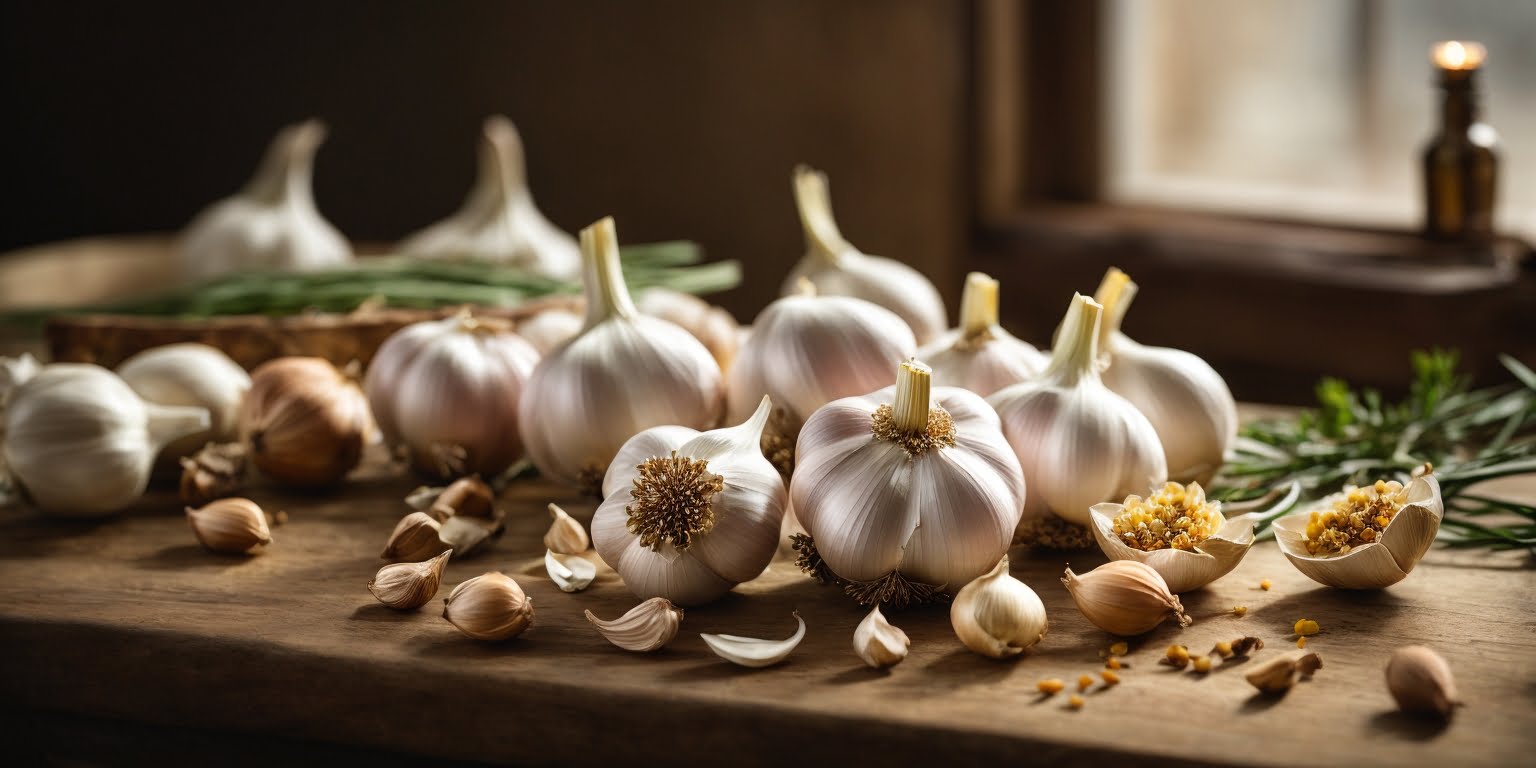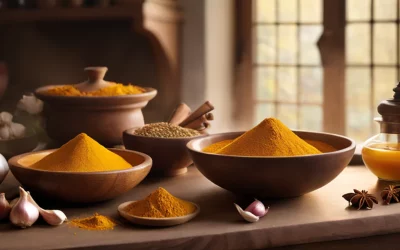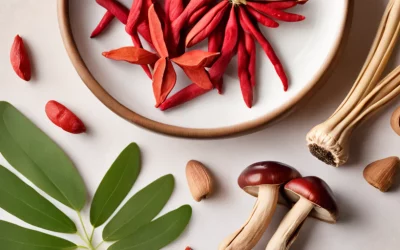Garlic, with its pungent aroma and distinct flavor, has been a staple ingredient in culinary traditions for centuries. But is garlic a vegetable?
Unraveling the mystery behind this versatile kitchen essential involves exploring its botanical classification, culinary usage, and variety. Let’s dive into the fascinating world of garlic, shedding light on whether it falls under the category of vegetables or something entirely different.
- Understanding What Garlic Is
- Clarifying Garlic’s Classification as a Vegetable
- Exploring the Culinary Uses of Garlic
- Examining the Health Benefits of Garlic
- Garlic’s Role in Disease Prevention and Immune Support
- The Nutritional Value of Garlic
- Growing and Using Different Types of Garlic at Home
- Final Remarks
- Frequently Asked Questions
Understanding What Garlic Is
A Species in the Onion Genus
Garlic, often mistaken for a vegetable or spice, actually belongs to the Allium genus. This places it among other members like onions, shallots, and leeks. Despite its classification as a species of onion, garlic possesses unique characteristics that set it apart from traditional vegetables.
Garlic’s distinct pungent flavor and aroma are what makes it an essential ingredient in various cuisines worldwide. Its strong taste adds depth to dishes and is used both raw and cooked in numerous recipes. For instance, when minced or crushed, garlic releases a potent scent that infuses into food during cooking.
Not Your Typical Vegetable
While garlic may not be a typical vegetable like carrots or broccoli, it is commonly utilized as a flavorful addition to savory meals. Unlike most vegetables that are valued for their texture and nutritional content, garlic stands out due to its intense taste profile.
In essence, while garlic might not fit the conventional image of a vegetable you’d find on your plate at dinner time; rather than being enjoyed on its own merits alone – this versatile ingredient enhances the overall flavor profile of many dishes.
Clarifying Garlic’s Classification as a Vegetable
Edible Bulb
Garlic, despite being a member of the onion family, is indeed classified as a vegetable. This categorization is primarily due to its edible bulb. The bulb of the garlic plant contains multiple cloves which is what makes it fall under the umbrella of vegetables.
When we think about vegetables, we often picture leafy greens or other items that grow in gardens. However, even though garlic doesn’t fit this image, it still falls into the category because of its unique structure. The fact that you can consume the entire bulb sets it apart from onions and places it firmly in the realm of vegetables.
Culinary Usage
In cooking, garlic is widely used to add flavor to dishes such as pasta sauces, stir-fries, and roasted vegetables. Its classification as a vegetable also influences how it’s utilized in various cuisines around the world. Whether minced, crushed, or sliced, garlic plays an essential role in enhancing flavors and adding depth to savory dishes.
Moreover, understanding that garlic is considered a vegetable helps individuals make informed decisions about their dietary choices. It encourages them to incorporate this flavorful ingredient into their meals for added nutritional value alongside other traditional veggies like carrots and broccoli.
Exploring the Culinary Uses of Garlic
Versatile Ingredient
Garlic is a flavorful and warming spice that holds a special place in cuisines worldwide. Its unique taste and aroma make it an essential ingredient in many dishes. Whether sautéed, roasted, or minced, garlic adds depth to recipes and enhances the overall flavor profile.
Garlic’s use as a cooking ingredient extends across various cultures and culinary traditions. From Italian pasta aglio e olio to the beloved garlic bread, this versatile vegetable elevates the taste of numerous dishes. Its ability to infuse savory notes into meals makes it an indispensable component in kitchens globally.
Popular Dishes
In Italian cuisine, garlic takes center stage in pasta aglio e olio – a simple yet flavorful dish where thinly sliced garlic is gently sautéed in olive oil and then tossed with spaghetti. The result is a delectable combination of flavors that perfectly showcases the versatility of garlic as both a seasoning and standalone ingredient.
Few aromas are as enticing as that of freshly baked garlic bread. This classic favorite features a buttery spread infused with minced or powdered garlic, creating an irresistible treat enjoyed by many around the world.
Examining the Health Benefits of Garlic
Blood Pressure and Cholesterol Levels
Garlic has health benefits that are supported by studies, suggesting its potential to lower blood pressure and cholesterol levels. The compounds found in garlic play a role in these effects. For example, allicin is a compound in garlic known for its ability to relax blood vessels, aiding in reducing blood pressure. Studies have shown that regular consumption of garlic may lead to modest reductions in total and LDL cholesterol levels.
Garlic’s impact on health extends beyond flavoring dishes; it has been linked to promoting overall well-being through its positive effects on cardiovascular health. By incorporating garlic into meals or taking it as a supplement, individuals may experience improvements in their heart health.
Antioxidant and Anti-inflammatory Properties
The presence of compounds with antioxidant and anti-inflammatory properties makes garlic an important addition to one’s diet for maintaining good health. These properties contribute to combating oxidative stress within the body while also helping reduce inflammation.
Consuming foods rich in antioxidants can help protect cells from damage caused by free radicals, which are unstable molecules that can harm the body when their levels become too high. Similarly, anti-inflammatory properties aid in reducing inflammation throughout the body, potentially lowering the risk of chronic diseases associated with prolonged inflammation.
- Garlic helps lower blood pressure.
- It contributes to reducing cholesterol levels.
- The antioxidant content protects against cell damage.
- Its anti-inflammatory properties aid in lowering the risk of chronic diseases.
Garlic’s Role in Disease Prevention and Immune Support
Antimicrobial Properties
Garlic, often considered a vegetable due to its bulbous nature, contains enzymes that may contribute to its antimicrobial properties. Some studies suggest that these enzymes help combat certain bacteria and fungi. For example, allicin, a compound found in garlic when crushed or chopped, is believed to have antimicrobial effects. This means it can potentially inhibit the growth of microorganisms.
Research has shown that garlic may be effective against some antibiotic-resistant strains of bacteria. These findings support the idea that garlic possesses valuable antimicrobial properties that could aid in fighting off infections.
Immune-Boosting Effects
Traditionally used for its potential immune-boosting effects, garlic consumption has been linked to reduced risk of certain infections. The compounds found in garlic are thought to stimulate the production of white blood cells which play a crucial role in fighting off infections and boosting overall immunity.
Moreover, regular intake of garlic has been associated with enhanced immune function by supporting the activity of natural killer cells and macrophages – both vital components of the body’s defense system against pathogens.
The Nutritional Value of Garlic
Vitamins and Minerals
Garlic, often mistaken for a vegetable, is a member of the allium family, closely related to onions and shallots. While it’s not a vegetable, garlic is low in calories but packed with essential nutrients. For instance, it contains noteworthy amounts of vitamin C, known for its immune-boosting properties. Garlic provides a significant dose of vitamin B6 and manganese.
Moreover, this flavorful ingredient also contains trace amounts of various other vitamins and minerals that are beneficial to overall health. These include selenium, calcium, potassium, phosphorus, iron, and copper. All these nutrients contribute to the numerous health benefits associated with consuming garlic regularly.
Allicin Compound
One crucial compound found in garlic is allicin which gives garlic its distinct aroma and flavor. This compound has been linked to several potential health benefits such as reducing blood pressure and cholesterol levels as well as having anti-inflammatory properties.
When garlic is chopped or crushed during meal preparation or cooking processes like roasting or sautéing at moderate heat levels for short periods—allicin forms from an interaction between two compounds present in raw garlic: alliinase (an enzyme) and alliin (a sulfur-containing amino acid). This process activates allicin’s bioavailability which then contributes to the potential positive effects on human health when consumed regularly.
Growing and Using Different Types of Garlic at Home
Softneck and Hardneck Varieties
Garlic comes in various types, such as softneck and hardneck, each offering unique flavors, storage capabilities, and ideal growing conditions. For instance, softneck garlic tends to have a milder flavor compared to hardneck varieties. Softneck garlic is known for its longer shelf life due to its better storage qualities. On the other hand, hardneck garlic offers a more complex flavor profile and typically produces larger cloves.
Home gardeners can enjoy the flexibility of experimenting with different types of garlic cultivars based on their preferences. This experimentation allows them to discover which variety thrives best in their specific climate and soil conditions while catering to their culinary needs.
Cultivating Various Garlic Cultivars
By cultivating different types of garlic at home, individuals can explore the diverse flavor profiles that each type offers. For example, those who prefer a milder taste might opt for softneck varieties like Artichoke or Silverskin garlic. Conversely, if they desire a stronger flavor with easier-to-peel cloves suitable for roasting or grilling, they might choose hard-neck varieties such as Rocambole or Porcelain garlic.
Experimenting with various cultivars also enables home gardeners to appreciate the subtle differences in taste and aroma that each type brings to their dishes. Moreover, by growing different types of garlic at home, individuals can ensure a fresh supply year-round without relying solely on store-bought produce.
Final Remarks
So, is garlic a vegetable? Absolutely! From its classification as a vegetable to its versatile culinary uses and numerous health benefits, garlic proves itself as a valuable addition to your diet and home garden. Whether you’re using it to add flavor to your favorite dishes or reaping its immune-boosting properties, garlic stands as a powerhouse of nutrition and wellness.
Now that you know the ins and outs of garlic, why not try incorporating it into your daily meals? Whether it’s roasted, minced, or crushed, garlic adds a flavorful punch to any recipe while offering an array of health perks. So, next time you’re in the kitchen, don’t forget to reach for this humble yet extraordinary vegetable!
Frequently Asked Questions
Is garlic a vegetable?
Yes, garlic is botanically classified as a vegetable. It belongs to the Allium (onion) family and is closely related to onions, shallots, and leeks. However, it is commonly used as a flavorful herb or spice in cooking due to its pungent flavor.
What are the health benefits of garlic?
Garlic has been linked to various health benefits such as boosting immune function, reducing blood pressure, improving cholesterol levels, and having potential anti-inflammatory and antioxidant effects. Its active compound allicin contributes to many of these health-promoting properties.
How can I use different types of garlic at home?
You can experiment with different varieties of garlic in your culinary creations by adjusting for their varying flavors and intensities. Whether it’s the mild taste of elephant garlic or the robust flavor of hardneck varieties, each type can bring distinct nuances to your dishes.
Can growing my own garlic at home be rewarding?
Absolutely! Growing your own garlic allows you to experience the satisfaction of cultivating a staple ingredient right from your backyard. Plus, freshly harvested garlic often boasts superior flavor compared to store-bought options, enhancing the quality of your culinary endeavors.
What makes understanding the nutritional value of garlic important?
Understanding the nutritional content of garlic helps individuals incorporate this ingredient into their diets more intentionally. With notable amounts of vitamins C and B6 along with minerals like manganese and selenium, it adds both flavor and nutritional value to meals.





